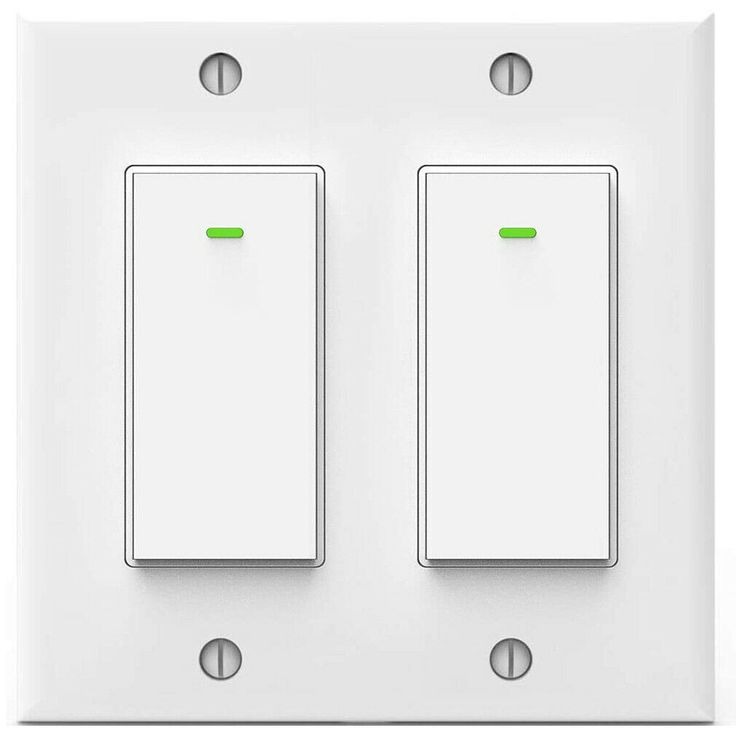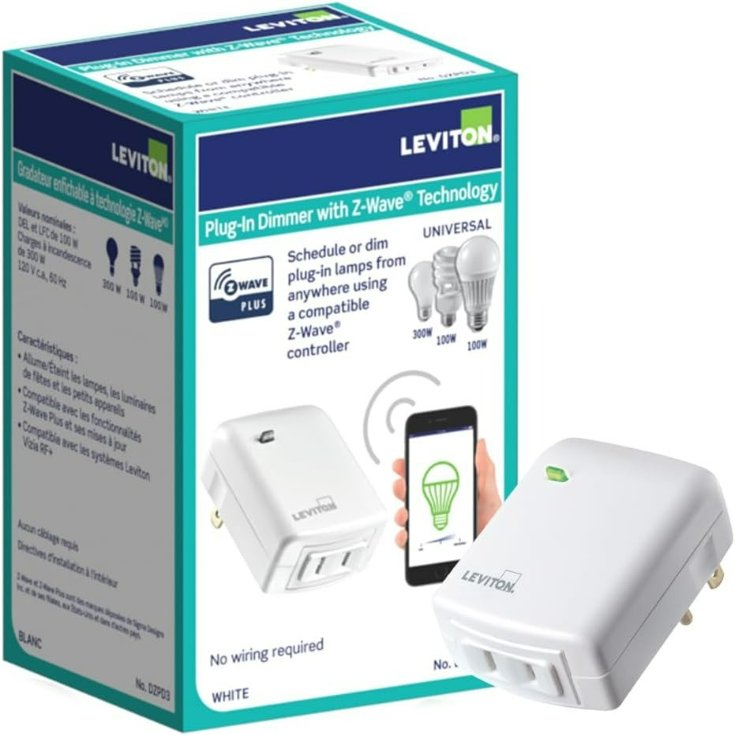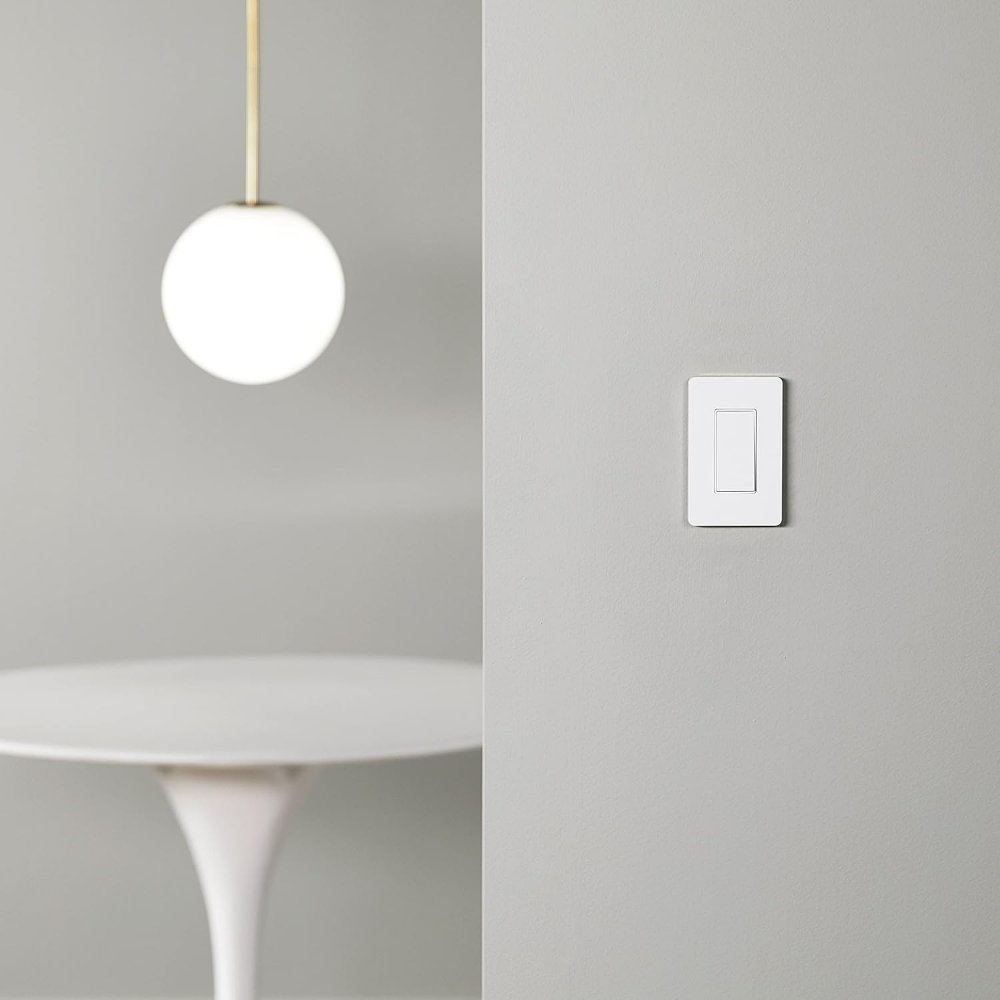Introduction to Z Wave Technology
Z Wave technology stands out in smart home automation. It is a powerful wireless communication protocol. It uses low-energy radio waves to connect devices. This technology allows devices to work together, creating a seamless network. The term ‘Z Wave’ refers to the ‘Z’ pattern wireless signals create. They hop from one device to another, ensuring wide coverage. With Z Wave, smart switches connect without cables.
A Z Wave smart switch can control lights, security systems, and more. It’s an essential part of any smart home. Z Wave operates on a mesh network. This means each switch acts as a signal repeater. Devices further away connect easily. Homeowners prize Z Wave for its reliability and easy setup.
Z Wave uses a low-frequency band. This reduces interference from Wi-Fi and other devices. Its unique networking approach allows for a vast range of compatible devices. Integrating a Z Wave smart switch is straightforward. It enhances home management and energy efficiency. As an SEO expert and blogger, emphasizing Z Wave’s simplicity and effectiveness is key. This draws readers looking for smart home solutions.

Benefits of Using Z Wave Smart Switches
The benefits of using Z Wave smart switches in home automation are numerous. Here are a few key advantages:
- Enhanced Convenience: Z Wave switches make everyday tasks easier. With just a tap, you can control lighting and appliances from anywhere.
- Increased Energy Efficiency: These switches help save on energy bills. You can set schedules or turn devices off remotely, reducing unnecessary power use.
- Improved Security: Pairing Z Wave smart switches with security systems heightens your home’s safety. Control lights and alarms for added security.
- Scalability: Start small and grow your smart home system over time. Z Wave’s mesh network makes adding devices straightforward.
- Compatibility: Z Wave smart switches work with various devices and brands. This makes building an integrated smart home system easier.
- Reliability: The mesh network ensures strong connections throughout the home. The Z Wave protocol provides stable and consistent performance.
By focusing on these benefits, we cater to homeowners seeking efficient, secure, and convenient smart home solutions. Embedding Z Wave smart switches into the home brings a new level of control and peace of mind to everyday living.
How to Choose the Right Z Wave Smart Switch
Choosing the right Z Wave smart switch is crucial for an efficient smart home setup. Here are factors to consider before making a purchase:
- Compatibility: Ensure the switch is compatible with other devices in your smart home network.
- Load Requirements: Check the electrical load the switch can handle. This is vital for safety and proper functioning.
- Features: Look for extra features like energy monitoring or dimming capabilities.
- Design: The switch should fit your home’s aesthetics. Style may influence your choice.
- Brand Reputation: Choose a brand with good customer support and robust product warranties.
- Network Range: A switch with a strong signal ensures it communicates well with other Z Wave devices.
- Ease of Use: The switch interface should be user-friendly. It’s important for daily operation.
- Price Point: Find a switch that offers good value for the price. Don’t overpay for unnecessary features.
Incorporating these considerations will guide you to the best Z Wave smart switch for your home. Always remember, a switch that fits your specific needs will enhance your experience with home automation.

Step-by-Step Installation Guide
Installing a z wave smart switch is a straightforward process. Here’s a simple guide to help you get started:
- Turn Off Power: Safety first. Always turn off the circuit breaker or power to the area where you’ll be working.
- Remove Existing Switch: Unscrew the faceplate and remove the existing switch from the wall box.
- Check Wires: Ensure wires are in good condition. Identify the live, neutral, and ground wires.
- Install Z Wave Switch: Connect the wires to your new z wave smart switch. Follow the specific instructions provided by the manufacturer.
- Secure the Switch: Once connected, carefully place the switch back into the wall box. Screw it in place.
- Attach Faceplate: Put the faceplate on your new switch. It should snap or screw into place easily.
- Restore Power: Turn the power back on at the circuit breaker. Test the switch to ensure it’s working properly.
- Pair with Network: Follow the manufacturer’s guide to add the switch to your Z Wave network. Use your controller to include it in your system.
- Test Functionality: Test the switch manually and via your smart home system.
- Customize Settings: Set up any schedules, scenes, or controls through your smart home interface.
With these steps, your z wave smart switch will be installed and you’ll enjoy streamlined home automation. Remember to always refer to the manufacturer’s instruction manual for specific installation details.
Integrating Z Wave Switches into Your Smart Home System
Integrating Z Wave switches into a smart home system can be a game changer. These devices work well with other smart home tools. They provide centralized control and improve the overall smart home experience. Below are the steps to integrate Z Wave switches effectively:
- Check for Compatibility: Make sure all devices can communicate with the Z Wave switch. This ensures smooth operation.
- Use a Central Hub: A central hub or controller is the heart of a Z Wave system. It lets you manage all connected devices.
- Update Firmware: Keep the switch’s firmware updated. This can improve functionality and security.
- Create a Network Map: Plan how devices will connect and interact. This helps in setting up the system.
- Position Devices Strategically: Place switches where signal strength is strongest. It affects communication with the hub.
- Set Up Scenes and Schedules: Automate your switch operations. Create scenes for different times or activities.
- Monitor and Adjust: Watch how your switches work. Adjust settings for better performance.
- Expand When Ready: Add more Z Wave devices as needed. Build your system gradually.
Remember, a well-integrated Z Wave switch network improves efficiency and helps manage your home effectively. It offers control over lights, security, and other appliances with just a tap. Ensure that the z wave smart switch is placed at optimal locations for the best performance of your smart home system.

Troubleshooting Common Z Wave Smart Switch Issues
When using z wave smart switches, you may encounter issues now and then. Here’s how to troubleshoot common problems:
- Connection Problems: If your switch isn’t responding, check the distance to the nearest Z Wave device. Sometimes, moving it closer can fix the signal issue. Make sure there are no large metal objects interfering with the signal.
- Pairing Challenges: Trouble adding your switch to the network? Start by resetting the device. Then, follow the pairing instructions again. Ensure your controller is in pairing mode.
- Intermittent Operation: Inconsistent performance can be frustrating. If the switch works sporadically, power cycle it by turning the breaker off and on. Also, check for firmware updates.
- No Power: If the switch doesn’t power on, verify your wiring. Ensure you connected the live, neutral, and ground wires correctly during installation.
- Device Not Recognized: When a device isn’t recognized by your hub, it could be a compatibility issue. Check the device’s documentation and verify it’s Z Wave certified.
- Poor Range: Z Wave uses a mesh network, but walls and distances can still cause issues. Adding a signal repeater or another Z Wave device between the switch and the hub might help.
- Flickering Lights: This can happen when there’s a mismatch in load type and switch capacity. Make sure your bulbs are compatible with the z wave smart switch.
- Unresponsive Commands: If your switch ignores commands, recheck the network. Remove and re-add the device to your hub. This can often refresh the connection.
For more complicated issues, you might need to contact customer support. Always keep your system updated and maintain your devices for best performance. Remember, with proper maintenance and these troubleshooting tips, z wave smart switches can be a reliable part of your smart home automation.
Z Wave vs. Other Smart Home Protocols: A Comparison
When exploring smart home automation, comparing protocols is vital. Z Wave sets itself apart in several key areas. Other protocols include Wi-Fi, Zigbee, and Bluetooth. Let’s look closer at how they differ compared to Z Wave.
- Range: Z Wave excels with its mesh network, boosting the signal across devices. Wi-Fi has a strong range too, but it often needs extenders in larger homes. Zigbee also uses a mesh network, similar to Z Wave. However, Bluetooth’s range is shorter, often limiting its use.
- Compatibility: Z Wave smart switches boast wide compatibility with various brands. Wi-Fi and Bluetooth devices are known for broad support. Yet, Zigbee gadgets might struggle with cross-brand compatibility.
- Energy Consumption: Z Wave uses low-energy radio waves, conserving more power over Wi-Fi or Bluetooth. This is ideal for devices you don’t charge often.
- Security: Z Wave has strong security protocols, essential in smart home tech. Wi-Fi is secure but can be vulnerable if not well protected. Zigbee also maintains good security standards while Bluetooth’s security can vary.
- Interference: The low-frequency band of Z Wave reduces interference from other devices. Wi-Fi suffers from overcrowding and interference due to its high-frequency use. Zigbee operates on the same frequency as Wi-Fi, which can cause interference, while Bluetooth typically experiences minimal interference.
- Ease of Integration: Z Wave’s simplicity makes integration easy. It stands out against Wi-Fi which can be complex to integrate due to various standards. Zigbee and Bluetooth are simpler, but still may have some hang-ups during set-up.
When deciding on a smart home protocol, consider each one’s pros and cons. Compare these against what you need from your smart home system. For many, Z Wave’s reliable range, compatibility, and low energy use make it the top choice for seamless smart home automation.
Future of Z Wave in Home Automation
The future for Z Wave in home automation looks bright. With tech advancements, Z Wave stands to become even more robust and user-friendly. Here are a few trends shaping the future of Z Wave smart switches and home automation:
- Improved Interoperability: Ongoing efforts aim to enhance Z Wave’s compatibility with a broader range of devices, making smart homes more interconnected.
- Enhanced Security: Upcoming upgrades focus on stronger security measures. This will help protect against hacking and unauthorized access.
- Simplified Installation: As Z Wave tech evolves, expect easier setup processes. This makes Z Wave smart switches more accessible to homeowners.
- Energy Efficiency Advances: Z Wave devices will likely see improvements in energy conservation, aligning with eco-friendly trends.
- Smarter AI Integration: The integration of artificial intelligence can lead to smarter automations that learn and adapt to lifestyles.
- Broader Adoption: Global smart home market growth suggests more homes will adopt Z Wave technology. Affordable options will boost its popularity.
- Voice-Control Features: Z Wave will deepen its voice command options, offering more ways to manage your smart home hands-free.
- Extended Range and Performance: Future Z Wave products may boast longer range and better mesh networking abilities.
These advancements show how Z Wave is shaping up to be a cornerstone in the smart home domain. It has the potential to elevate home automation to new levels of convenience and efficiency. For those invested in smart homes, Z Wave smart switches remain a strong contender in the evolving market.